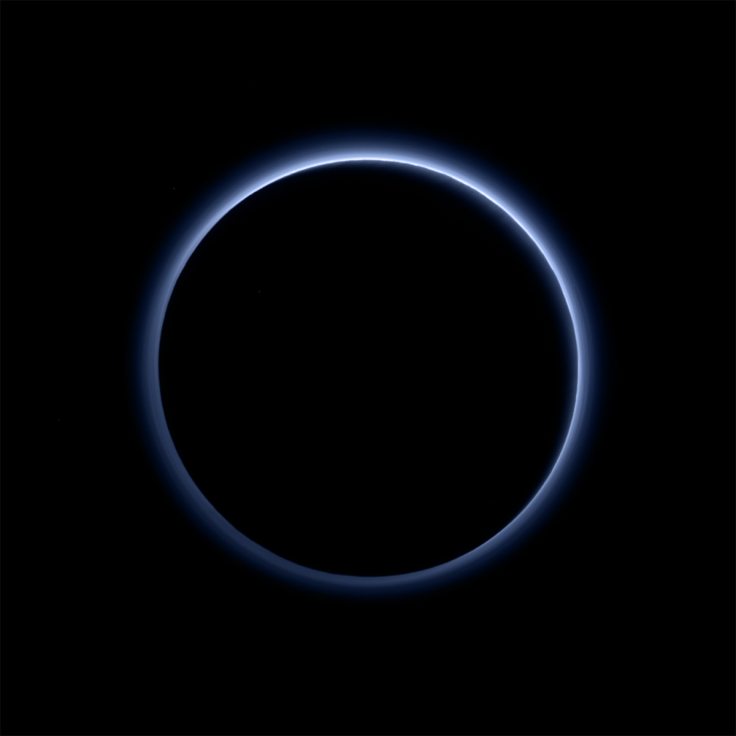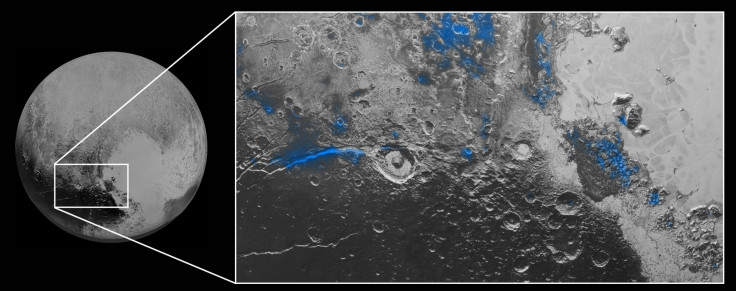Pluto's Mysterious Stunning Blue Sky And A Hint Of Water Ice In New Horizons' Latest Photos

For a dwarf planet way out in the Kuiper Belt, Pluto is surprisingly full of surprises. NASA released a batch of photos from the space probe New Horizons that yield several scientific discoveries. One photo reveals a hazy blue sky around Pluto, while another shows evidence of exposed ice water on its surface.
The blue tint is due to particles in the atmosphere, NASA said. The effect is similar to how Earth's sky gets its color. "A blue sky often results from scattering of sunlight by very small particles," Carly Howett, New Horizons science team researcher, said in a statement. "On Earth, those particles are very tiny nitrogen molecules. On Pluto they appear to be larger -- but still relatively small -- soot-like particles we call tholins."
Tholins are complex particles that give Pluto and other planets and the moon their red tint when they drop to the surface. Scientists have struggled to define what tholins are -- usually referring to the particles as "stuff" or "gunk" -- but the molecules are produced by a chemical reaction when ultraviolet light hits methane. The Planetary Society has a good primer detailing the history and definition of these particles.
Previous New Horizons photos of Pluto revealed ice mountains along with nitrogen ice, but the new images reveal areas of exposed ice water. The water appears red -- due to interactions with tholins -- but researchers are still in the early stages of their analysis of the dwarf planet. "I’m surprised that this water ice is so red,” said Silvia Protopapa, science team member from the University of Maryland, College Park. “We don’t yet understand the relationship between water ice and the reddish tholin colorants on Pluto's surface."

Thursday's photo release was eagerly anticipated, based on comments made by New Horizons principal investigator Alan Stern. "NASA won’t let me tell you what we’re going to tell you on Thursday. It’s amazing," Stern said in an appearance Oct. 5 at the University of Alberta.
© Copyright IBTimes 2024. All rights reserved.




















